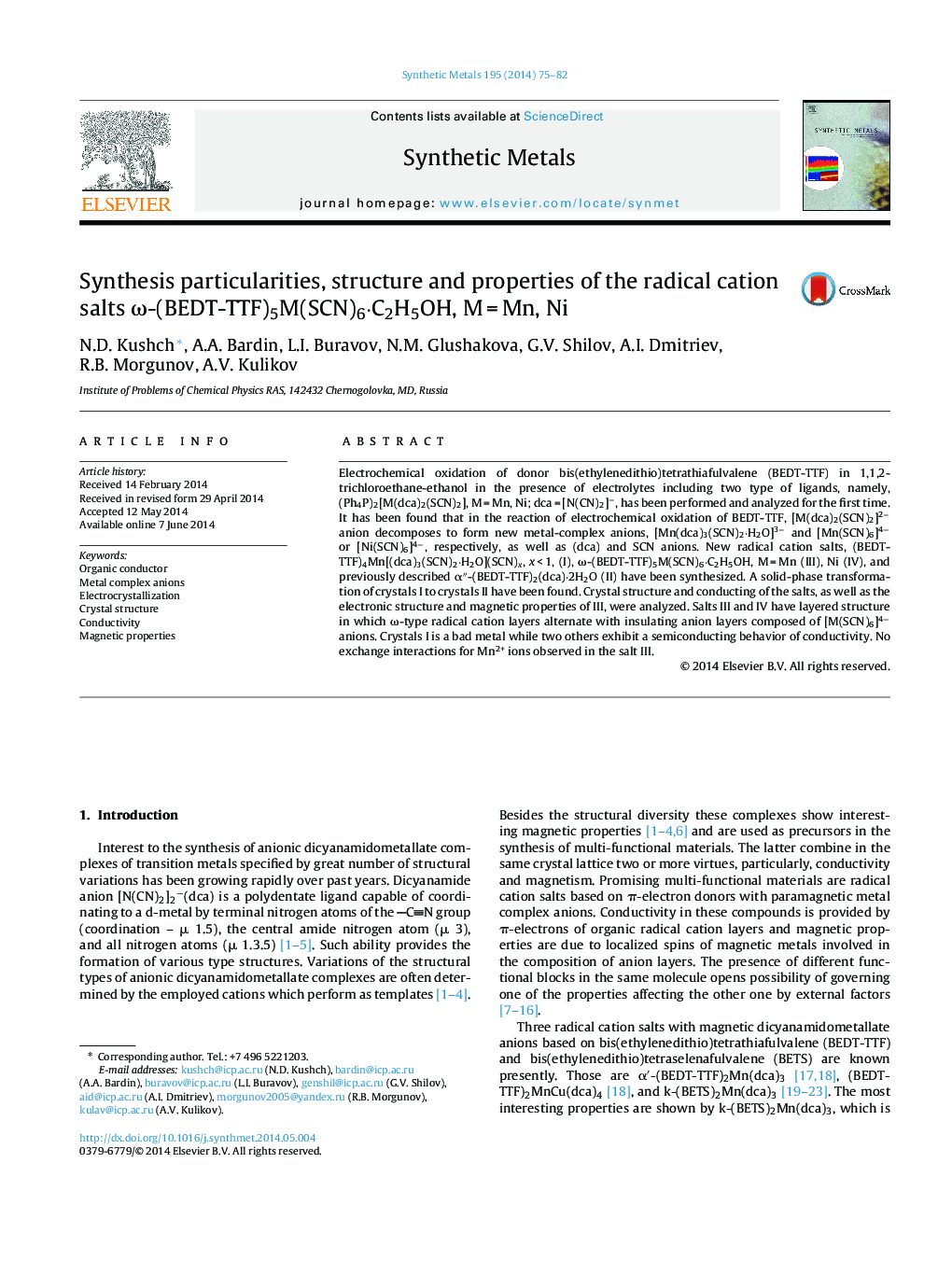| Article ID | Journal | Published Year | Pages | File Type |
|---|---|---|---|---|
| 1440927 | Synthetic Metals | 2014 | 8 Pages |
•Three new salts based BEDT-TTF donor were synthesized by electrocrystallization.•Electrolytes with two type of ligands (Ph4P)2{M[N(CN)2](SCN)2} (M = Mn, Ni) were used.•Used electrolytes decomposition in solvent and new metal-complex anions form.•A solid transformation one phase in another was observed visually.•The structure, band structure and properties of prepared new salts were investigated.
Electrochemical oxidation of donor bis(ethylenedithio)tetrathiafulvalene (BEDT-TTF) in 1,1,2-trichloroethane-ethanol in the presence of electrolytes including two type of ligands, namely, (Ph4P)2[M(dca)2(SCN)2], M = Mn, Ni; dca = [N(CN)2]−, has been performed and analyzed for the first time. It has been found that in the reaction of electrochemical oxidation of BEDT-TTF, [M(dca)2(SCN)2]2− anion decomposes to form new metal-complex anions, [Mn(dca)3(SCN)2·H2O]3− and [Mn(SCN)6]4− or [Ni(SCN)6]4−, respectively, as well as (dca) and SCN anions. New radical cation salts, (BEDT-TTF)4Mn[(dca)3(SCN)2·H2O](SCN)x, x < 1, (I), ω-(BEDT-TTF)5M(SCN)6·C2H5OH, M = Mn (III), Ni (IV), and previously described α″-(BEDT-TTF)2(dca)·2H2O (II) have been synthesized. A solid-phase transformation of crystals I to crystals II have been found. Crystal structure and conducting of the salts, as well as the electronic structure and magnetic properties of III, were analyzed. Salts III and IV have layered structure in which ω-type radical cation layers alternate with insulating anion layers composed of [M(SCN)6]4− anions. Crystals I is a bad metal while two others exhibit a semiconducting behavior of conductivity. No exchange interactions for Mn2+ ions observed in the salt III.
Graphical abstractFigure optionsDownload full-size imageDownload as PowerPoint slide
